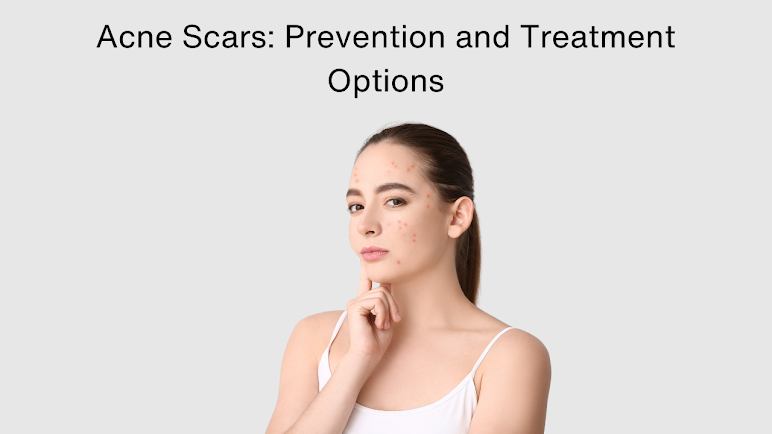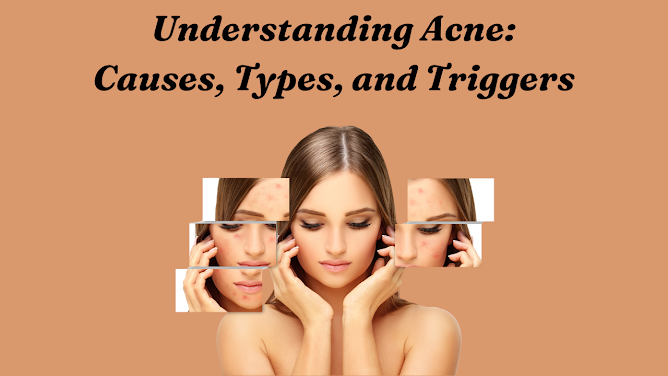Acne Scars: Prevention and Treatment Options

Welcome to the Gleuhr skin and dental clinic in Chandigarh and we provide best skin, hair and dental treatment in tricity and we also sell natural skin and hair products in all over world. We have best skin specialist in Chandigarh who are highly educated and dedicated to their work. https://clinic.gleuhr.com/

Acne, a common skin condition, affects millions of individuals worldwide, often causing physical and emotional distress. Understanding the causes, types, and triggers of acne is crucial for effective management and treatment. This comprehensive guide explores the intricate facets of acne to shed light on its complexities.

Acne arises from a combination of factors, primarily involving the hair follicles and oil glands in the skin. Here are the main contributors:
Excess Sebum Production: Sebaceous glands produce an oily substance called sebum, which helps keep the skin lubricated. However, excessive sebum production can lead to clogged pores and acne formation.
Bacteria: Propionibacterium acnes (P. acnes), a type of bacteria that thrives on the skin, plays a role in acne development. When pores become clogged with excess sebum and dead skin cells, P. acnes can multiply and trigger inflammation.
Inflammation: Inflammation is a key component of acne. When the body's immune system responds to bacterial invasion, it causes redness, swelling, and pus formation characteristic of acne lesions.
Hormonal Fluctuations: Hormonal changes, particularly during puberty, menstruation, pregnancy, and menopause, can stimulate sebum production and contribute to acne flare-ups. Androgens, male hormones present in both males and females, play a significant role in this process.
Genetics: There is evidence to suggest that genetics influence an individual's susceptibility to acne. People with a family history of acne are more likely to develop the condition themselves.
Acne manifests in various forms, each with its own characteristics and severity. The primary types of acne include:
Whiteheads and Blackheads: These are non-inflammatory acne lesions characterized by clogged pores. Whiteheads occur when the pore is completely blocked by debris and sebum, while blackheads occur when the pore is partially blocked, allowing the trapped material to oxidize and turn black.
Papules: Papules are small, red bumps that develop when blocked pores become inflamed. They may feel tender to the touch and can be accompanied by mild swelling.
Pustules: Pustules are similar to papules but contain pus at their tips. They appear as white or yellow bumps on the skin's surface and are often surrounded by redness.
Nodules: Nodular acne consists of large, painful lesions deep within the skin. These firm, solid bumps develop when clogged pores become further inflamed, leading to the formation of hard, swollen masses.
Cysts: Cystic acne is the most severe form of acne, characterized by large, pus-filled lesions that extend deep into the skin. Cysts are often painful and can cause scarring if not treated promptly.
While the underlying causes of acne are multifaceted, several factors can exacerbate or trigger acne flare-ups:
Diet: Certain foods, such as high-glycemic-index carbohydrates and dairy products, have been linked to increased acne severity in some individuals. Additionally, excessive consumption of sugary or greasy foods may contribute to inflammation and sebum production.
Stress: Stress can disrupt hormone levels and exacerbate acne symptoms. Elevated stress hormones, such as cortisol, can stimulate sebum production and inflammatory responses in the skin, leading to breakouts.
Skincare Products: Some skincare and cosmetic products contain ingredients that can clog pores or irritate the skin, exacerbating acne. It's essential to choose non-comedogenic products labeled as oil-free and suitable for acne-prone skin.
Medications: Certain medications, including corticosteroids, hormonal contraceptives, and lithium, can trigger or worsen acne as a side effect. If acne develops or worsens after starting a new medication, consult a healthcare professional for alternative options.
Environmental Factors: Exposure to environmental pollutants, humidity, and excessive sweating can contribute to acne development by clogging pores and promoting bacterial growth. It's important to cleanse the skin regularly and avoid prolonged exposure to environmental irritants.
In conclusion, acne is a multifactorial skin condition influenced by a combination of genetic, hormonal, environmental, and lifestyle factors. By understanding the causes, types, and triggers of acne, individuals can take proactive steps to manage their condition effectively. Consulting with a dermatologist and adopting a personalized skincare routine can help minimize acne symptoms and improve overall skin health.
Comments
Post a Comment